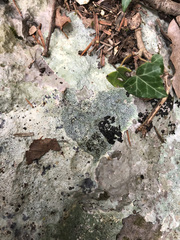Russula cerolens

Russula cerolens is a standout member of the Russula genus, characteristic of the mycological diversity in the Comunidad Valenciana. It is a noteworthy and distinct species, recognizable by both its morphological features and ecological interactions.
- Cap: The cap of Russula cerolens ranges from 5 to 10 cm in diameter. It typically displays a dull or waxy surface, with colors varying between pale yellow and straw. The cap's texture is often slippery, especially in humid conditions.
- Gills: The gills are closely spaced, white to cream in color, and attached to the stem. They provide a stark contrast to the often colorful cap.
- Stem: Its stem is solid, cylindrical, and usually measures 4 to 8 cm in length. The color ranges from white to cream, sometimes exhibiting slight browning where handled.
- Spore Print: The spore print of Russula cerolens is typically white, contributing to the identification of this species.
- Habitat: This fungus is predominantly found in mixed forests of the Comunidad Valenciana, often in association with various types of oak trees. It favors well-drained, calcareous soils.
- Edibility: While some Russula species are edible, the edibility of Russula cerolens is not well-documented, and caution is advised. Always consult local experts or guides before foraging.
The common presence of Russula cerolens in the Valencian territory highlights the region's rich and diverse mycological heritage, offering insight into the complex ecosystems supported by local forests.






